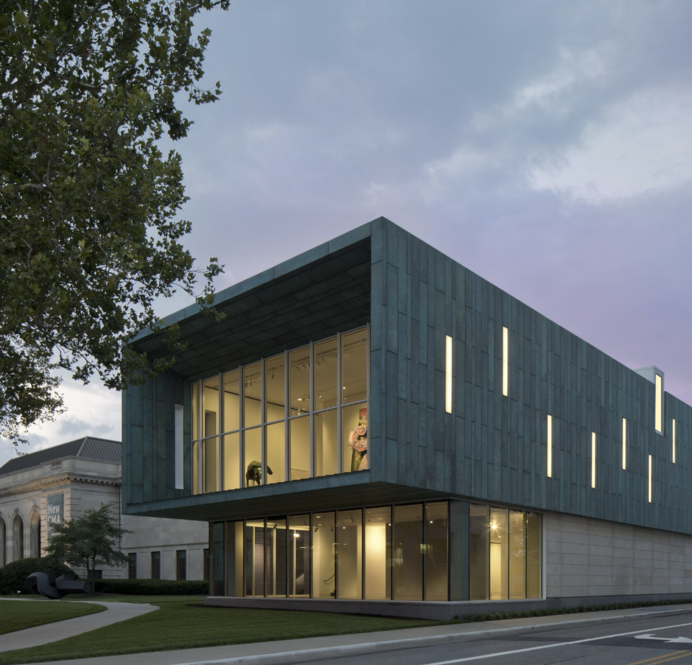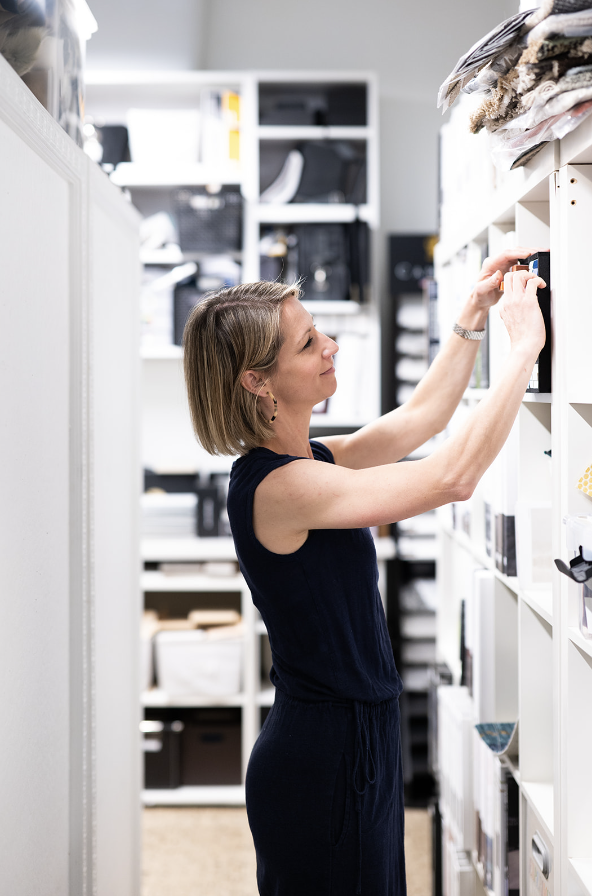Interior Design can leave a huge carbon foot print. Between building materials, furniture, lighting and electrical, and paper products, from start to finish a remodel, renovation, or new build can create a lot of waste. Luckily, sustainability and eco-friendly design is becoming more popular and attainable.
LEED
The Leadership of Energy and Environmental Design (LEED) is a rating system that gives buildings and projects the ability to earn points for environmentally friendly choices made during the construction and design process. Established by the United States Green Building Council, (USGBC), LEED assesses the environmental performance and impact of a building and is helping design and architecture trends move towards being more eco-friendly.
Why should we follow LEED guidelines?
LEED buildings benefit the community and the people who work or live within and around them. LEED buildings conserve energy, water, and resources by generating less waste and, in the long run, cost less money to operate. These buildings also support human health by providing better indoor air quality and daylight, which has proven to increase job retention, employee productivity, and the amount of days worked.
The LEED rating system
Based on points received, buildings/projects earn one of four LEED ratings.
The four levels of certification are: Certified (40-49 points), Silver (50-59 points), Gold (60-79 points), and Platinum (80+ points). The LEED building/projects earn points on nine areas that address key aspects of building sustainably:
-
Integrative Process: This area focuses on the synergies between systems and components of a building to achieve high-performance and environmental benefits. This area enhances the effectiveness and the efficiency of every system in a building.
-
Location/Transportation: This area focuses on the decisions about building locations. It encourages compact development (building up, not out), alternative transportation (biking, trains, etc.), and proximity or connection to amenities (such as parks, restaurants, etc.).
-
Sustainable Sites: This area rewards credits for decisions regarding the environmental surroundings of the building/project. This area puts a lot of emphasis on the relationship between buildings and ecosystems.
-
Water Efficiencies: This area addresses water usage, such as indoor and outdoor uses, specialized uses, and metering.
-
Energy and Atmosphere: This area addresses how to reduce energy usage, using energy-efficient designs and strategies, and incorporating renewable energy sources.
-
Material and Resources: This area focuses on minimizing the negative impacts associated with extraction, processing, transportation, maintenance, and disposal of building materials.
-
Indoor Environmental Quality: This area rewards credits to projects/buildings that make good decisions regarding indoor air quality, thermal and visual comfort, and occupant satisfaction.
-
Innovation: This area is intended to provide projects/buildings the opportunity to achieve exceptional performance that would go above-and-beyond the LEED rating system requirements.
-
Regional Priority: This area encourages project teams to focus on their local environment priorities while constructing a building.
Examples of LEED Buildings Near Us!
Certified Certification

Photo Credits: Heapy Engineering and ArchNews
The Columbus Museum of Art recently went under a phase renovation and expansion that achieved LEED Certified Certification. Buildings built in 1930, 1931, and 1974 were renovated and a 50,000 square foot addition, featuring an enclosed glass area, was constructed.
The renovation addressed the museum’s mechanical systems and made the regulation of temperature, humidity, and pressure (necessary to preserve the artwork) more energy efficient. The new mechanical equipment was able to reduce energy, and use 16% less energy than a conventional museum building.
From a design standpoint, the electrical systems are comprised of LED light fixtures that highlight the artwork in the best light possible.
The existing structure of the building was reused during renovations which, with the use of best-practice construction material disposal, significantly reduced the amount of construction materials that would have otherwise ended up in a landfill.

Sources:
http://www.heapy.com/portfolio/commercial/5-portfolio/portfolio/254-columbus-museum-of-art.html
Silver Certification

Photo Credit: bizjournals.com
The Buggyworks building, formerly Columbus Buggy Co, was renovated in 2016 and achieved LEED Silver Certification. The 118-year old building was formerly used to manufacture ‘horseless buggies’. This renovation maintained the unique character of the existing building by preserving the original timber framing and exposed brick masonry. Meanwhile the building systems and building envelope were updated to allow for occupant comfort and sustainable performance.

Sources:
https://www.cbusarch.com/project/buggyworks-office-renovation/
Gold Certification

Photo Credit: Columbia Gas of Ohio
Columbia Gas of Ohio, in the Arena District of Columbus Ohio, has achieved LEED Gold certification! This headquarters building earned LEED Gold certification by utilizing energy efficient mechanical systems and lighting, improving the indoor air quality, using energy star appliances and furniture pieces made from recycled materials. This building is one of only eight buildings in Columbus OH to achieve LEED Gold certification.

Sources:
How Crimson designs Green
1. Energy efficiency: By simply manipulating the materials we use we can greatly impact a space. Lighting and window treatments are a key part of this; using drapes, we can keep cold air and heat from fluctuating interior temperatures. Carpet retains up to 10% of a room’s heat, which can impact energy savings up to 6% a year. Even paint colors affect the energy you consume; lighter colors reflect more light while darker colors require more artificial lighting.
Source: http://carpetinfo.co.uk/all_about_carpet/why_choose_carpets.htm
2. Low environmental impact: Material choice is key when it comes to sustainability. We try to choose products that can be quickly renewed, organic, and are harvested in eco-friendly ways. Some of our favorite environmentally conscious products include those by Interface, which makes sustainable carpet. Interface became one of the first companies to put green thinking into motion when Ray Anderson decided the typical business model of take-make-waste wasn’t for him. They pledged to become the one of the world’s first environmentally sustainable company. They’re slated to eliminate any and all negative impact the company has on the environment by 2020.
Another company we like to utilize is Moen, which creates eco-performance products. Moen is a household name and to keep up with innovations in technology, they’ve created fixtures that reduce water use by up to 32%. They’ve started initiatives to recycle up to 82% of waste made from their manufacturing process, changing their business model to become more globally devoted. Their eco-performance fixtures contribute to LEED points without losing the high-quality performance expected from Moen.
Sources: http://www.interface.com/APAC/en-AU/about/mission/Net-Works-en_AU
3. Waste reduction: One of the best ways to reduce your waste is to upcycle. Using products sourced from Columbus Architectural Salvage and local flea markets, you can keep waste out of landfills. By partnering with companies such as Edgework Creative we’ve taken clients’ old tables they have fallen out of love with and used the raw material to create a new console that has a story unlike any other. Crimson is dedicated to unique design and by reinventing vintage finds, clients get one of a kind pieces while helping keep our environment clean.
4. Longevity: Sustainability is important on a day to day basis but a key piece of that is designing for the future. Designers have to create a space for today that will still function whenrequirements and needs evolve in 5 years. The long-game in sustainability can be crucial because our field is ever-adapting with new ideas, materials, and discoveries; designers have to be continuously on the search for the next best thing whether it be a fabric that resists bacteria or tiles made from recycled glass. Sustainable design solves the needs of today and anticipates the wants of tomorrow.
5. Health: It may seem as though air pollution only exists outside, but that’s a common misconception. Indoor air pollution is one of the five biggest environmental threats to personal health. This indoor pollution is caused by materials and products that emit toxins into the air. Designers have to be on the lookout for materials with low or zero VOC (volatile organic compounds). Sherwin Williams has paints that now contribute to LEED points and others are following suit, creating paints that resist bacteria, are free from harsh chemicals and can now be deemed as “healthy”. Plants are natural air filters and for those who aren’t blessed with a green thumb, air filters and auto-cleaners are just a click away in today’s world.
Source: https://www.globalhealingcenter.com/natural-health/10-shocking-facts-indoor-air-quality-iaq/
Our favorite environmentally conscious brands and products
If you’re interested in bringing some sustainability into your daily life, here are some of our favorite environmentally conscious brands and products!
Econyl- Econyl has created a nylon regeneration system to re-commercialize yarn into everyday products.

Adobe- The tech company is devoted to green with more than 70% of their workspaces being LEED certified.
Allbirds- Footwear made from naturally existing materials.
FabHabitat- Rugs made from recycled plastic straws.

Dash & Albert- 100% PET rugs made out of recycled plastic bottles.

People Tree- Fair trade sustainable clothing thats focused on social justice.
DoAmore- Sustainable jewelry that helps alleviate the world’s water crisis.
Recover- Clothing out of 100% recycled material.






